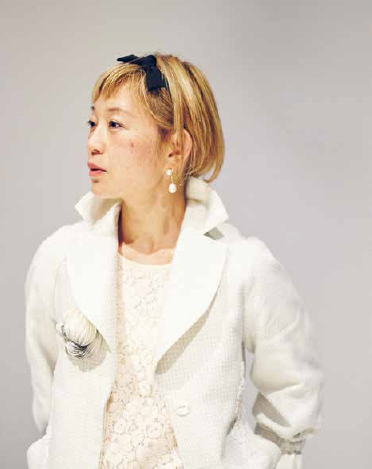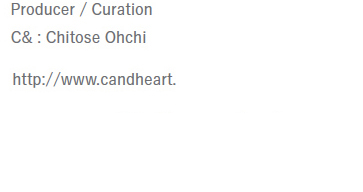“Prologue”
Sweet Hirado_Japan’s Island of Sweets
Hirado, one of Japan’s westernmost islands, was the first place where western culture arrived in Japan in the 16th century. The Europeans called it Firando.
Here, in the 1600’s, the Dutch built the first western buildings ever in Japan as part of their trading post. By that time many foreigners were living together with the people from Hirado and many new cultural aspects and products had been introduced to Japan through Hirado. One of those new products was sugar.
While Hirado was exposed to sugar and foreign sweets culture, a warrior style of tea ceremony founded by the lord of Hirado, Shigenobu Matsura, flourished together with this unique local sweets culture. Hirado had truly become Japan’s Island of Sweets.
お菓子の島 平戸
15C西欧文化が日本の中で1番目に到着した日本最西端の島、平戸。その当時、西欧ではフィランドと呼ばれた。1609年には日本初の西洋建築であるオランダ商館が建ち、その頃平戸は様々な国々の珍しいものや文化が到着し、また様々な国の人々が一緒に暮らしていた。この平戸・日本初上陸というものの中の一つに、“砂糖”がある。
この砂糖や異国の菓子文化の影響を受けながら、その当時の平戸藩主松浦鎮信公が立てた茶道の一派、武家茶かな砂糖菓子文化が平戸では育った。平戸はまさに日本で初めてのお菓子の島なのである。
Hyakka no zu (Encyclopaedia of 100 Sweets)
The lords of Hirado who belonged to the ancient House of Matsura have handed down an “Encyclopaedia of 100 Sweets”.
This book was created 200 years ago by orders of the lord of Hirado, Hiromu Matsura, for the people of his town. It contains vivid drawings of 100 selected sweets as well as their recipes. This encyclopaedia of 100 sweets is a unique work since it does not only contain Japanese style “wagashi” sweets, but also lists sweets that are heavily influenced by Southeast Asia and Europe. The sweet culture that was brought over the wild seas from the west was influenced by the various cultures and stories it met on its way until it reached its final destination Hirado, Japan, where it blossomed in to a new culture of sweets.
百菓子之図
この平戸藩主松浦家に伝わる“百菓之図”。これは今から約200年前に平戸藩主松浦凞公が町民の為に作ったお菓子図鑑であり、 100のお菓子を選び、絵描き、レシピも付いたものである。この百菓之図には単なる和菓子だけでなく、東南アジア、ヨーロッパなどの影響を受けたお菓子も描かれており、国際的な文化交流の跡も垣間見ることのできるユニークなお菓子図鑑である。
西から海を渡り伝わった文化は、その航路の途中で様々な文化や物語を取り込みながらここ最終地点であった平戸、日本で新たな菓子文化へと花開いたのである。
Sweet Hirado
Together with designers/artists from the Netherlands, who got inspired by the book, also Hirado’s longstanding cultural and business partners, we will create new modern day Hirado Sweets. Japanese traditional sweets are closely associated with literatures, cultures and arts, such as Waka (Japanese poem), Haikai (seventeen-syllable verse), nature. Their colors, aroma, shapes and names portray stories and dreams that are put into the sweets. Now we will introduce the Japanese confections to the world with new explanations and stories.
Combining tradition and culture of Hirado and viewpoint of designers/artists from The Netherlands, we will produce new traditional and innovative Hirado sweets, to deliver them to the world. This is the project “East to West Sweets Encyclopedia ”.
The project is not just limited to sweets but also includes the presentation of newly designed plates, tea bowls and other items that are directly linked with the sweets. Together with tea ceremony, wagashi sweets shall exist in some space, all the more, its existence will appear. This time tea utensils are likened to some space, by placing the sweets there, and create a story.
In 2016 two designer/artist teams from the Netherlands, studio INAMATT and Roosmarjin Pallanot, are invited to Hirado. They are paired with 3 sweets shops in Hirado (Eshiro, Kumaya and Tsutaya) as well as with makers for the plates and tea bowls such as the historical Hirado porcelain kilns in Mikawachi, Leerdam Glass and silver plates in the Netherlands. Together we will present a new culture of sweets from Hirado to the world.
In 2016 the sweets and plates will be released during the Dutch Tea Ceremony in Hirado and Tokyo, and in Europe in 2017.
東西百菓之図
百菓之図からインスパイアを受け、平戸との繋がりも深くお菓子文化の発展にも影響を及ぼしたオランダと一緒に、現代における平戸菓子を作ろうと考えた。 平戸の伝統・文化とオランダのデザイナー、アーテイストとの視点を組み合わせ、 新たな伝統と革新のお菓子、平戸菓子を製作、そして世界に発信する。日本のお菓子は和歌、俳諧、花鳥風月など文学や歳時記など文化、芸術に深く結びついている。色や香り、形、名、これらから、そのお菓子に込められた物語や夢が立ち現れる。現代このお菓子に新たな解釈や物語を込めて世界に伝えることを考えた。このプロジェクトが“東西百菓之図”である。
このプロジェクトはお菓子のみならず、お菓子の周辺である器、茶碗なども一緒にデザインし発表する。茶道と共にあるお菓子、和菓子は、本来ならばある空間やお茶席に存在するからこそ、そのお菓子の存在が立ち現れてくる。 今回は器や茶碗をある空間とみたて、そこに新たな 試みのお菓子を置くことにより、ひとつの物語が出来上がるように作り上げる。2016年は2組みのオランダ人デザイナー・アーテイスト INA-MATT / Roosmarijn Pallandt を招き、 平戸のお菓子屋 3組み(えしろ、熊屋、蔦屋)と、器・茶碗は三川内焼、オランダのleerdamガラスやシルバーの器などと共に平戸から世界に向けて新たな菓子文化を提案する。
2016年、オランダ茶会と称した茶会にて、平戸・東京にてお菓子・器は発表され、2017年ヨーロッパにて発表予定。
The Matsura family were the lords of the Hirado and
“Encyclopedia of 100 Sweets”
Hirado Island is located just 500m across the Hirado-strait, at the most northwestern end of the Kyushu mainland. From ancient times Hirado has been an important port of call on international shipping routes. Starting with exchanges with the Asian mainland, Hirado later forged connections with places further away; Southeast Asian and Portuguese ships arrived in the 16th century and the Dutch and English at the beginning of the 17th century. They all passed through the Hirado-strait and entered Hirado port where the Matsura clan ruled. Hirado was the first place where many foreign products and cultures arrived, whether it was religion (Zen Buddhism, Taoism, Christianity), weapons (guns, cannons), lifestyle (clothes, etc) or culture (bread, sugar, beer).
In the 1600’s many foreigners lived in Hirado. Among them the Dutch East India Company employees who worked at the Duch Trading Post (1609-1641), English and Korean interpreters who were employed at the English Trading Post (1613-1623), as well as many Chinese merchants. Hirado had been a key port on international shipping routes and was a global region even before the 1600`s. Hirado and the Matsura family have kept the relationships with the Netherlands and Southeast Asian nations such as Taiwan and China up until today.
In the Edo period (1603-1868) the Matsura family were the lords of the Hirado domain and had a major influence on local politics and culture. The 29th head of the Matsura family, Shigenobu (aka Tensho) earned his place in history as a master of the tea ceremony. When he was at the age of just 20, Hirado faced financial difficulties because the shogunate (feudal government) ordered the relocation of the Dutch Trading Post to Dejima in Nagasaki, stripping Hirado of its trading income. However, he succeeded in transforming the local economy and also achieved great success in his later life as a founder of the warrior style of tea ceremony Chinshin-ryū. The 34th head of the Matsura family Kiyoshi (aka Seizan) was called 'ranpeki daimyo' because of his devotion to Dutch science and culture. He was a unique collector and founded “Rakusaido”; Japan’s largest library at that time, where he collected Dutch books, terrestrial and celestial globes, etc.
The 35th head of the family Hiromu was Seizan’s biological child. Hiromu compiled the ”Encyclopedia of 100 Sweets”. He was born in Hirado (it was the first time in 200 years that a lord was actually born there) and loved Hirado all his life. He also enjoyed poetry, songs and books. After retiring from public life, he uncommonly stayed in his hometown Hirado, and spent his last years there. He started to compile the “Encyclopedia of 100 Sweets” from 1841 onwards, taking 6 years to list the various sweets by tasting them over and over again. Hiromu compiled this book to pass on the Hirado sweets culture to the following generations. His passion might have come from the spirit of tea ceremony, as he was proud that unique Hirado sweets had been developed there because it was the first place in the nation where sugar arrived, so he created the book for later generations.
In 1867, the year before the Meiji era began, Hiromu passed away. In 1871 the feudal domains were abolished and prefectures were established in their place. First Hirado prefecture was created but it was later incorporated into Nagasaki prefecture. The lord was made a count in the new Japanese peerage system.
Nowadays Akira Matsura is the 41st head of the family. In May of 1998 he found the beautiful “Encyclopaedia of 100 Sweets” hidden away in his storehouse. This discovery was the start of the East to West Encyclopaedia.
平戸藩主松浦家と百菓之図
九州の北西端に、わずか500mほどの瀬戸で隔てて平戸島がある。古代より航路の要地であり、アジアをはじめ、16世紀には東南アジア・ポルトガル、17世紀初頭にはオランダ・イ ギリスの船舶が瀬戸を通過して、松浦(まつら)家が居を構えた平戸港に入港した。日本にもたらされる「モノ、文化」が最初に到着した場所である。
―渡来の宗教(禅宗・道教・キリスト教)、武器(鉄砲・大砲)、生活文化(衣食住)等々―。
1600年代、オランダ商館(1609-1641)には東インド会社所属のオランダ人が働き、イギリス商館(1613-1623)ではイギリス人や朝鮮半島出身の通訳がおり、チャイナタウン (1635年入港制限)が形成され、華やかに、また、様々な出来事が起きていた。平戸は長い歴史から航路の要地であり、江戸時代以前からグローバル地域であった。現在でもオラ ンダ・台湾・中国をはじめ東南アジア諸国と平戸及び松浦家は関係が続けている。
江戸時代、松浦家は平戸藩の藩主として、政治と文化に大いに影響を与えた。数寄者として後世に名が残る人物は、松浦家29代(4代藩主)天祥鎮信がいる。若干20歳の時に、幕府によりオランダ商館の出島に移転を命じられ藩財政は打撃を受ける。しかし改革に成功し、晩年には武家茶道 鎮信流を大成させた。松浦家34代(9代藩主)松浦静山は、再び悪化した藩政改革を断行、蘭学や博物学に熱を入れ、蘭癖大名とも呼ばれる。ユニークなコレクターでもあり、オランダで出版された 本、地球儀や天球儀などを集めた国内最大のコレクションの“楽歳堂文庫”を持った。 この静山の実子が、松浦家35代(10代藩主)熈(ひろむ)である。
彼が「百菓之図」を編集するのである。 江戸時代200年ぶりに平戸で誕生して藩主になった熈は、終生平戸を愛す。詩歌、書を愛し雅な趣であった 熈 は当時、とても珍しい国元隠 居を決行し、晩年の余生を平戸のために費やした。 百菓之図は藩主を離れた1841年から始められた。6年の歳月をかけて試食を繰り返し書き残された百菓之図。
後世に伝えんがために編集された、と書かれたこの百菓子之図には、もちろん茶道による所以はあるが、それと同時に、砂糖が日本の中でも初めて平戸に伝えられたことにより、 平戸らしいお菓子がここ平戸にて生まれたことを誇りに思い、残し伝えていきたいと考え編集されたのではないかと思う。
その熈は1867年、明治を迎える直前に没した。 1871年(明治4年)廃藩置県により藩領は平戸県となったのち、長崎県に編入された。藩主家は華族に列した。現在41代、松浦章氏。この松浦章氏が1998年5月、蔵に眠る秘蔵の「百菓之図」を発見したことにより、この”東西百菓之図”は始まるのである。
テキスト協力:久家孝史
For more information about retail and wholesale of all products,
please contact us at C& Chitose Ohchi
販売にかんするお問い合わせはこちらまで
松浦史料博物館
“Mikawachi Porcelain “Shimmm” by INA-MATT”
For more information about retail and wholesale of all products,
please contact us at C& Chitose Ohchi
販売にかんするお問い合わせはこちらまで
松浦史料博物館
“Mikawachi Porcelain by Roosmarijn Pallandt”
For more information about retail and wholesale of all products,
please contact us at C& Chitose Ohchi
販売にかんするお問い合わせはこちらまで
松浦史料博物館
trip to HIRADO
平戸
>>>



Epilogue
One day, my friend recommended me to visit Hirado. Hirado... it is the place my father likes. I had visited this place when I was a child. “Hirado” has a nostalgic ring to me that made me decide to go. Various stories are lying in Hirado. The islands are surrounded by beautiful sea and nature.
Back in the days, Hirado used to be the only way to the world for Japan. The sea was the only mysterious route where unknown things came from and where unknown destinations lay ahead. Hirado was the starting point and end at the same time of many things and therefore had a very unique culture. But I feel as if the time in Hirado has stopped at a certain point in these days.
Mr. Okayama, a director of the Matsura Historical Museum took me around Hirado. He introduced me to the history of confectionary in Hirado. He showed me the book of one hundred sweets ( Hyakka no zu ), a book with all confectionaries drawn with beautiful color and detail by hand. Some of these confectionaries were of a blue color that I had never seen before and some created an exotic foreign feeling in me. They were so beautiful and precious. After I saw this book, I actually realized that Hirado had been an international place at that time. One of the reminders of the era is the Dutch Trading post in the town. When I stood in front of it facing the ocean, I could imagine how Dutch, Portuguese and several other foreign countries’ boats frequented this sea. Here, foreigners who came over the sea were living among the Japanese. I could feel the spirit of Hirado. I wonder if it is possible to revive these old days again.
Back in Tokyo, I wondered if I could start a project in Hirado, to support the people in Hirado. A project, that people could identify and take pride with. I immediately started to research lots of things about Hirado. I wanted to create a project, that once again connects Hirado with the world. The story of the project should fly to the world as a message of Hirado. I gave Hirado the title “Hirado…Japan’s Island of sweets” and created the project “East to West Sweets Encyclopaedia”.
I hope that Hirado can connect more to the word through this project. The culture of Hirado is quite unique. Samurai culture and European Culture both of them existed together. There are a lot of stories about it in Hirado, which I want to share with people around the world. In order to achieve this, I wanted to bring Dutch artists to Hirado who create something within this context. I am very happy to have met two pairs of Dutch artists, INA-MATT and Roosemarijn Pallandt. I hope that we will create a unique and precious project together!
Many thanks to Mr.Matsura, he has a quite unique way of thinking and teaches me a lot of things. Thanks to Matsura Historical Museum, they are so warm and sweet. Thanks to The Three Musketeers of confectionaries, Eshiro, Kumaya, and Tsutaya, we are going to fight together! Thanks to Mikawachi-Porcelin, Hirado Kohsyo Danemon Kiln and Hirado Shouzan. I am happy I can meet lots of sweet Hirado people. Remco is always so sweet. He is not only a translator but also a best guide for Hirado etc..etc…! Fantastic creative Yellow Yellow,
and it’s certainly extremely nice of you to introduce me Hirado, Bas.
Wish you further success in any future endeavor
Chitose Ohchi
エピローグ
ご縁があり平戸へ訪れた。平戸という懐かしい響きに訪れることを決めた。父の好きな場所だった。
小学生の頃以来だろう、平戸に訪れたのは。美しい海と自然に囲まれてそこにはいろんな物語が今は静かに眠っていた。
様々な歴史の話しを聞きながら、海とはかつて未知なるものを運び、また未知なるところへと続く、ミステリアスな場であり、特別な意味を現在よりも持つものだったろうと感じた。その終わりと始まりの場所であった平戸は、凝縮された文化を一身に背負った最先端の場所であったに違いない。
しかしながら、今はどこかで時間が止まってしまったような感じがした。
松浦史博物館の岡山館長に平戸を案内していただいた。彼はなんどもお菓子、お菓子と平戸のお菓子のお話しをしてくださった。
そこで百菓之図を見せて頂き、そこには既に異国の香りのするお菓子や今や見たことのない色のお菓子が描かれていて、平戸は国際色豊かな島であったと実感したのだ。それから街を歩き、オランダ商館の前の海を見ながら思った。ここはかつて、オランダやポルトガル、数々の国々の帆船が通り、着物をきた人々の中に、まだ見ぬ国からたどり着いた人々がいたのだ。そしてその文脈は息づいている。もう一度これを実現させることが可能であるのではないか?と。
東京に戻りリサーチを重ね、企画書を作り上げた。実際に訪れて感じたことは、平戸に眠る物語を掘り起こし、平戸の人が喜び、誇りに思う、同時にそれが、人が集まる為のきっかけになり、そしてその物語は、世界、日本に放つことのできるものでなくてはと思った。
そして…平戸は日本初めてのお菓子の島、これだ!と思いついた。こうして生まれたのが、”東西百菓之図”である。
この”東西百菓之図”にて、平戸はここ平戸から世界に繋がる都市になって欲しいと願う。
平戸には、武家文化と西洋からきた文化が混ざり合い、平戸らしいユニークな文化を形成している。その中にはもっと世界の人々に知ってもらいたい眠っている物語が沢山ある。かつての歴史的背景もあるが、不思議なご縁で、オランダで活躍中の2組のアーテイスト、イナマットとローズマラインに出会い、平戸に来て頂いて、そこで感じたことから新しい物語を一緒に作ることができることもとても嬉しい。
最後に素敵なお話しにて色々なことを教えて下さる松浦章氏に感謝し、優しく温かい松浦史博物館の皆様に、そしてこれから共に戦う、お菓子三銃士のえしろさん、熊屋さん、蔦屋さん、三川内焼の平戸松山窯さん、平戸洸祥団右ヱ門窯さん、平戸で出会った沢山の方々、いつも通訳を超えた通訳をしてくれるRemco
素晴らしいクリエイティビティの YellowYellow、そして、平戸を紹介してくれた Bas に大きな感謝を込めて。
プロジェクトの成功を祈りつつ。
大地 千登勢